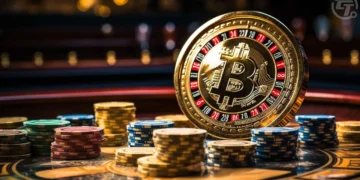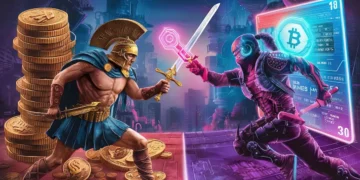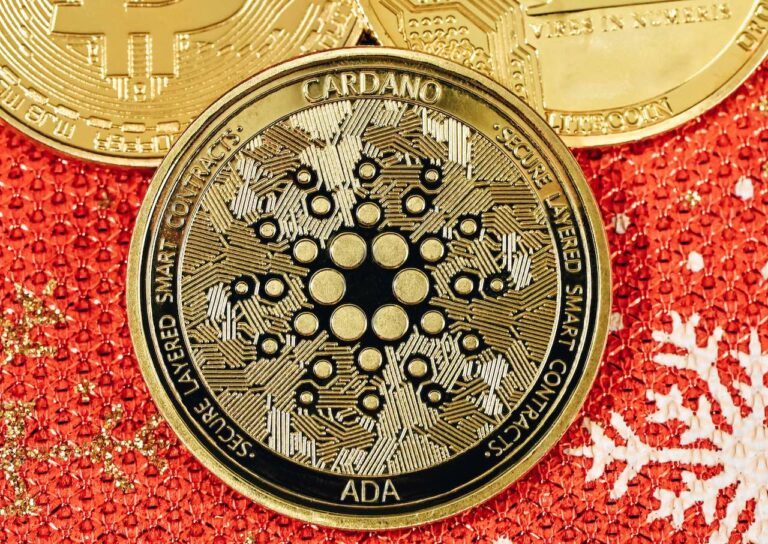In conventional finance, government-controlled financial coverage points forex, units rates of interest, and controls forex provide. Cryptocurrency has modified this. People can create their very own micro-economies. Tokenomics basically takes what central banks use as financial coverage and apply it in blockchain networks.
Right here’s how.
What’s tokenomics?
Tokenomics is the science of the token financial system. It covers all features involving a coin’s creation, administration, and typically elimination from a community.
The tokenomics of a challenge will usually think about 5 key elements:
- Minting – how does a challenge create tokens.
- Utility – what are these tokens for.
- Distribution – how are tokens allotted.
- Vesting and launch – how are locked tokens launched over time.
- Token burns – how are tokens taken out of circulation.
We break down every of those ideas beneath.
Do you know?
The concept of the token financial system was propounded first by the Harvard psychologist B.F. Skinner in 1972. He believed a token financial mannequin may management habits. Giving some unit of recognizable worth would incentivize constructive actions and vice versa.
Minting and Token distribution
Tasks want a mechanism that enables them to distribute the tokens they’ve created. If not, the community can exist however nobody will be capable of use it!
There are other ways this may be achieved. The networks reward validators, or miners, with newly minted cash; others promote a portion of the token provide to potential customers in an preliminary coin providing(ICO). Though this technique has falled out of favour, as a result of regulatory adjustments.
Different tokens distribute to customers by way of sure actions and behaviours. Augur for instance, rewards folks for verifying information on its betting community. Proof of stake chains in the meantime, distribute tokens to validators who assist course of transactions.
Vesting and launch
Cryptocurrencies are infamous for his or her volatility. Giant fluctuations in worth could cause spikes in exercise, which in flip can gradual a community down if there aren’t sufficient tokens obtainable in the marketplace.
Tasks can fight this by guaranteeing there are sufficient cash to match the degrees of provide. This may be seen on token monitoring web sites by a measure referred to as “tokens in circulation” or “circulating provide”. It’s an indicator of what number of cash can be found, and also will have particulars on the boundaries of the token provide.
Bitcoin, for instance, will solely ever have a token provide of 21 million.
This can be utilized to create stability, or create inflationary or deflationary worth pressures relying on the popular tokenomics of that challenge.
Utility / Governance
The core workforce behind every challenge devises the foundations by how tokens are created, or ‘minted’, in addition to how they’re injected into, and brought out of, the community. Totally different initiatives take completely different approaches.
Some initiatives can embrace tokens held in reserve which could be added into the ecosystem at a later level, as a approach to promote progress or to pay for system upkeep. Ripple is an effective instance of this.
Different initiatives in the meantime take a deliberate hands-off strategy to how the community works.
A stablecoin like Tether nonetheless, wailing periodically ‘burn’ tokens to assist regulate the coin’s worth within the market. The act of burning occurs when forex is shipped to a pockets that nobody is aware of the tackle.
Do you know?
Though the time period ‘tokenomics is used inside the business, it has but to obtain widespread recognition. The Oxford English Dictionary, broadly accepted as the principle authority on the English language, nonetheless doesn’t have an entry on tokenomics.
Do you know?
Though the time period ‘tokenomics is used inside the business, it has but to obtain widespread recognition. The Oxford English Dictionary, broadly accepted as the principle authority on the English language, nonetheless doesn’t have an entry on tokenomics.
Tokens as governance
Some networks incentivise folks to personal, maintain and use tokens as a manner of stopping folks from HODLing cash and stopping the community getting used because it was designed.
Proof-of-Stake (PoS) techniques, which depend on validators to truly ‘stake’ their very own cash, helps guarantee they act actually and pretty. In the event that they don’t play by the foundations, their tokens could be forfeited.
Many initiatives additionally create voting buildings that enable token holders to vote on which manner the challenge will go subsequent. Decentralized initiatives like DASH, MakerDAO and Decentraland all depend on this mannequin to form their improvement.
Future adaption
Most groups constructing a community gained’t go on to be its rulers. That’s not how decentralization works. Nonetheless, most builders know that what they construct now might not essentially work sooner or later. The way in which during which tokens are ruled might should be altered because the community grows and matures. Some, however not all, have provide you with provisions to how community customers can successfully change the best way tokens are managed inside the ecosystem by means of consensus.
Examples of tokenomics in motion
Bitcoin
Satoshi Nakamoto designed the protocol so {that a} regular stream of tokens can enter the community by means of block rewards. After a block has been efficiently validated by a ‘miner’, they obtain newly minted bitcoins. An additional 101 blocks need to be confirmed earlier than the miner has entry to their reward; this incentivizes them to proceed validating transactions. The quantity of tokens rewarded for every validated block halves time beyond regulation, to cease too many bitcoins getting into the community at anyone time.
Ethereum
Tokens are frequently distributed by block rewards. The challenge offered roughly 7m Ether throughout its ICO again in 2014 to assist kick-start mainstream adoption. There may be at the moment no laborious cap on Ether, that means that the token provide can proceed to develop because the community expands. Since Ethereum transitioned to a proof-of-stake consensus algorithm, miners have been changed by validators and staking swimming pools.
LINK
Hyperlink is the native token of Chainlink, a decentralized oracle in Web3. Its token is principally used for improvement functions. Builders pay with LINK to make use of Chainlink’s oracle infrastructure of Chainlink. Different customers might purchase, maintain and stake the tokens in return for a price of return usually states as an quantity of curiosity.
Why is tokenomics essential?
Blockchain know-how allows initiatives to create micro-economies. To grow to be self-sustaining, they want to determine how tokens ought to work inside their ecosystem.
There could be ‘nobody measurement suits all’ angle on the subject of tokens. Blockchain has enabled a various vary of use instances and implementations. Tokenomics allows groups to create a brand new or adapt an present mannequin that works with what the challenge desires to attain. This could create a high-functioning and steady platform, if carried out nicely.
The longer term
The ideas, philosophies and fashions by which tokens, cash and the initiatives they underpin are nonetheless within the early levels of understanding what works, and what does not.
The collapse of the Luna stablecoin in 2022 is a helpful instance right here. The algorithmic stablecoin labored for essentially the most half, till sure market situations meant the mannequin collapsed in on itself. How shortly initiatives can be taught from their errors will play a key function sooner or later improvement of tokenomics.
Regulators are additionally taking part in a big function in how tokens behave. In america, a lot of initiatives have fallen foul of regulatory rulings that has meant they needed to repay buyers. Telegram’s ‘Gram’ cryptocurrency is a well-known instance.
However for the initiatives that handle to create a tokenomics mannequin that’s sustainable each economically and from a regulatory perspective, a vivid future awaits.
This text was initially revealed on January 6, 2019 and was final up to date on September 19, 2023.

























































![What Is Asset Tokenization? Types, Why It Matters Now [2025]](https://coininsights.com/wp-content/uploads/2025/05/asset_tokenization-360x180.png)


























can you get generic clomid pills can i buy cheap clomiphene price cost of cheap clomiphene pills can i purchase clomiphene pills clomiphene medication effects buy cheap clomid price can i purchase generic clomid without insurance
This is a topic which is in to my heart… Many thanks! Quite where can I upon the contact details an eye to questions?
The thoroughness in this section is noteworthy.
zithromax 500mg cheap – purchase sumycin for sale buy metronidazole generic
order rybelsus 14 mg online cheap – how to buy cyproheptadine buy periactin 4mg without prescription
domperidone cost – sumycin pills how to buy cyclobenzaprine